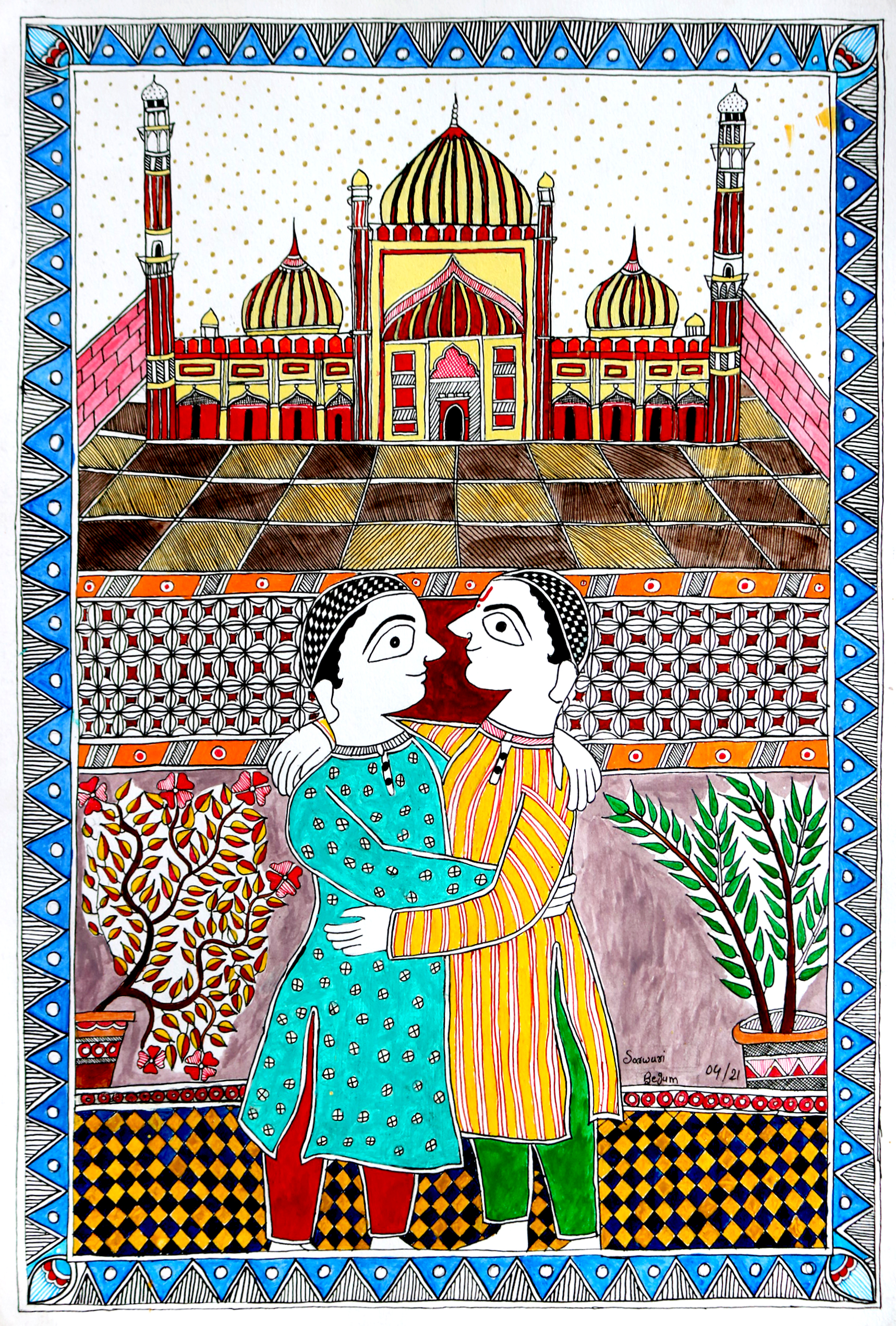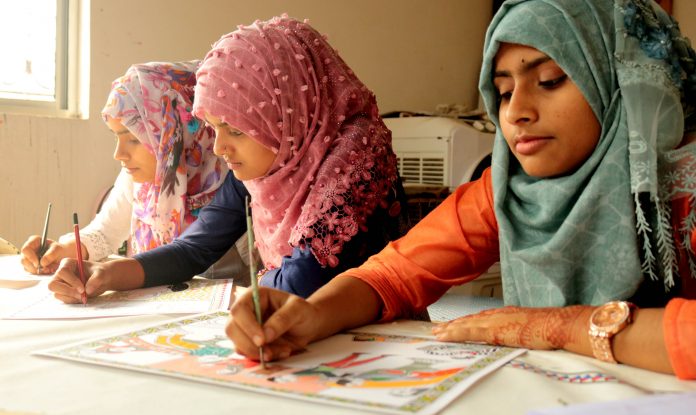A project for women to learn Madhubani painting saw mostly Muslim girls turning up to learn.
Sufi Parween | TwoCircles.net
MADHUBANI (BIHAR)—A bunch of Muslim girls in the Mithila region of Bihar are breaking taboo by learning the art form of Madhubani painting, which has historically been the forte of upper caste Hindu women who would portray mythic stories of Hindu religious figures Ram and Sita.
Originating from the Madhubani district of Bihar, the paintings done in this style are well-known across the world.
A project for women to learn Madhubani painting was started in December 2020 by contemporary Madhubani artist Avinash Karn. Interestingly, the majority of the students who turned up for the training were Muslim girls. Their training is supported by Artreach India and Seema Kohli Studios.
Historically, Muslims of the region would refrain from learning this art form due to religious reasons. This prevented Sajiya Bushra’s grandfather Haji Jameel Akhtar from learning the art form. He couldn’t pursue it due to a lack of acceptance among Muslims for the art-form. Sajiya and her younger sister Saleha got interested in the art form and decided to pursue it to “fulfill the dream of their grandfather.”
Sitting in the ArtBole studio in headscarves, 18-year-old Sajiya told TwoCircles.net, “Learning Madhubani painting means a lot for us because our grandfather wanted to learn this art, but he couldn’t because of some religious and political reasons. So when we expressed the desire to do so, our family supported us despite the hesitation of the local Muslims.”
“Whenever we paint at home, our grandfather sees us. He is very happy that we are doing this. And that is extremely precious for us,” she said while showing one of their paintings.
Sajiya thanked their trainer and artist Avinash Karn who provided “the opportunity to fulfil my grandfather’s unfulfilled wish.”
For Saleha, the younger sister, through this art form she wants to “depict the story of our life and society.” One among them is gender discrimination.
“We see the differential treatments given out to girls in our home which I bring out in my paintings,” she said.
20-year-old Sarwari Begum, an art graduate told TwoCircles.net that she wanted to depict social issues like the dowry system and child marriage. Her fellow trainee artist Rahmati Khatoon said, “I have seen many cases of domestic violence because of the dowry system. And I want to reflect this in my paintings.”

Madhubani painting largely a domain of Brahmin women
Historically, the art form was practised by women of upper caste Hindus. Much later, women of lower castes and Dalits started learning the art form. It was only in the last few decades that the art form legitimized painters from the Dalit community. Kayasthas and Brahmin women who mastered the art prevented Dalit women from learning or practising it. Their caste location meant they couldn’t tell the same stories of deities from the Ramayana or Mahabharata as upper-caste painters did. They had to find inspiration in nature and their surroundings. With more painters now from the Dusadh caste, the composition of renowned artists has changed — but attitudes have not. A popular opinion is that discrimination against Dalit artists remains rampant and their success is not celebrated.
“There is generally a lack of resources, but I want to take this art to the community level through Art Bole studio,” Avinash Karn told TwoCircles.net.
Karn said that the paintings of Sarvari Begum, Saleha Sheikh, Sajiya Bushra, and Rahmati Khatoon, which were seen in the ‘Art Bole’ studio may not be artistically mature yet, but the association of the Muslim community with this art form is a positive development.
According to Avinash, picking random local news from the newspapers is the first crucial step before beginning the painting. “Clipping the news and writing points to be painted on paper is the next step in the visualization of the story,” he added.
“There is a need for young voices and new experiments in Madhubani painting, which can give a new identity to this age-old art,” he added.
Sufi Parween is a fellow with the SEEDS-TCN mentorship program. She tweets at @sufiparween84


